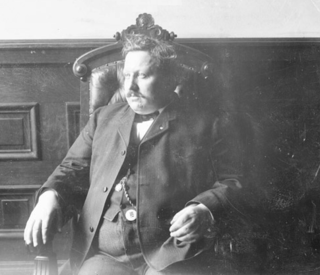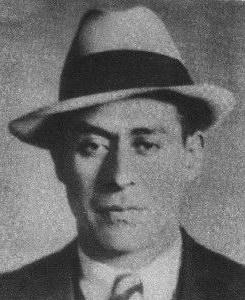Sangerman's Bombers were a criminal group of bombers based in Chicago during the 1920s.

A bomb is an explosive weapon that uses the exothermic reaction of an explosive material to provide an extremely sudden and violent release of energy. Detonations inflict damage principally through ground- and atmosphere-transmitted mechanical stress, the impact and penetration of pressure-driven projectiles, pressure damage, and explosion-generated effects. Bombs have been utilized since the 11th century starting in East Asia.

Chicago, officially the City of Chicago, is the most populous city in Illinois and the third most populous city in the United States. As of the 2017 census-estimate, it has a population of 2,716,450, which makes it the most populous city in the Midwestern United States. Chicago is the county seat of Cook County, the second most populous county in the United States, and the principal city of the Chicago metropolitan area, which is often referred to as "Chicagoland." The Chicago metropolitan area, at nearly 10 million people, is the third-largest in the United States, the fourth largest in North America, and the third largest metropolitan area in the world by land area.
The successors of Sweeney's Bombers, the gang was formed by Joseph Sangerman in the early-1920s, shortly after the arrests of the Sweeney gang in 1921. Hired out primarily by Chicago politicians and organized crime groups (such as Al Capone's Chicago Outfit), the group was the first to use its services for labor unions. As an officer of the Chicago barbers union, as well as a leading manufacturer of barber supplies, Sangerman began using the gang to bomb barber shops which refused to agree to union regulations. With the gang's early success, Sangerman began accepting jobs from outside trade unions. By the time of Sangerman's arrest in 1925, the gang, by Sangerman's own admission, included a well-organized group of six members which was hired from $50 to $700. George Matrisciano, a leading member of the gang, was considered one of the best bomb makers in Chicago history. After receiving several indictments against him as a result of Sangerman's arrest, Matrisciano was killed before his testimony. A later investigation by the Illinois Crime Survey suspected several members of the barbers union; however, no charges were filed. Another famous member of the Bombers was Cornelius "Con" Shea. [1]

Alphonse Gabriel Capone, sometimes known by the nickname "Scarface", was an American gangster and businessman who attained notoriety during the Prohibition era as the co-founder and boss of the Chicago Outfit. His seven-year reign as crime boss ended when he was 33.

The Chicago Outfit is an Italian-American organized crime syndicate based in Chicago, Illinois, which dates back to the 1910s. It is part of the American Mafia originating in Chicago's South Side.

Cornelius P. Shea was an American labor leader and organized crime figure. He was the founding president of the International Brotherhood of Teamsters, holding the position from 1903 until 1907. He became involved with the Chicago Outfit, and although he was indicted many times, he usually escaped conviction. After a short prison term for attempted murder removed him from union affairs, Shea was appointed secretary-treasurer of the Mafia-dominated Theatrical Janitors' Union in Chicago.
The gang dissolved shortly afterward the conviction of Sangerman and Matrisciano's death. The use of bombings as a means of intimidation had become less favorable from the negative press coverage, specifically during the Aldermen's Wars of 1916-1921 and the 1928 Republican convention known as the "Pineapple Primary", drew too much attention and public outcry and by the end of the decade the Chicago underworld had returned to more discreet methods of intimidation.

The Pineapple Primary was the name given to the primary election held in Illinois on April 10, 1928. The campaign was marked by numerous acts of violence, mostly in Chicago and elsewhere in Cook County. In the six months prior to the primary election, 62 bombings took place in the city, and at least two politicians were killed. The term "Pineapple Primary" originates with the contemporary slang term "pineapple" to describe a hand grenade.




